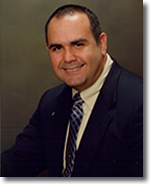
Chapter 21 of the Laws of 2011 in New York State authorizes pharmacists to perform collaborative drug therapy management with physicians in teaching hospitals, including any diagnostic center, treatment center, or hospital-based outpatient department. This was signed into law last week and is a nice lead in to this week’s blog: The evolution of the pharmacy profession – one pharmacist at a time.
Pharmacists have long been held as the most accessible healthcare professionals. That means we “see” patients first before other healthcare professionals do. When physicians are unreachable, community pharmacists field calls and get quizzed on all facets of drug information as patients hunger for immediate answers on their medications.
With the pharmacy practice evolving on a national scale into medication therapy management and patient care services, community pharmacists are still stuck playing “catch-up” to their hospital pharmacist counterparts on physician perceptions of pharmacists. Community pharmacists are viewed as dispensing practitioners, while hospital-based pharmacists are viewed as more adept at patient-care activities. Obviously, the environment plays a huge role in the perception. In any case, community pharmacists have a lot of ground to cover to change the perceptions of physicians from a dispensing to a patient-centric pharmacy practitioner.
Firstly, the perception of dispenser to patient-centric pharmacy practitioner must first be destroyed by the pharmacists themselves. More formalized training and skills development is needed to re-program pharmacists to accept the new roles forming within and, shaping the profession. Additionally, credentialing themselves via nationally recognized organizational standards is vital to establishing credibility with physicians and third-party payers. Without this additional measurable status, it will be difficult to establish a meaningful set of patient-care standards from which to reimburse pharmacists for patient-care services.
Secondly, by forming a collaborative working relationship (CWR) with the medical profession, no matter the environment, the pharmacy profession will evolve into the patient-care role it so desperately craves. CWRs are the key to transforming the profession in the community environment. Physicians hunger for current prescription information about their patients to make life-changing therapeutic decisions, and the pharmacy/pharmacist has that information. By working together as a team, we – the physician, the pharmacist and the patient all win. This type of relationship must be explored fully by all pharmacists in all practice settings, and must be fostered from the beginning in pharmacy and medical schools.
And lastly, the retail sector of the profession will have the hardest time dealing with this change as product movement is more tangible and measurable than patient-care services. The big-box chains tout their transformations from product to service; however, their actions betray their intent when supportive help (technician hours line item) is drastically reduced to generate more profit for the company (bonuses) and shareholders. Without the technicians to assist the pharmacist in fulfilling ancillary tasks involved in dispensing and patient services, the pharmacists will have to do more in addition to providing “patient services”. These services will be reduced (cheapened) to another “commodity” to peddle for a quick, over-priced dollar value, reduce the physician-pharmacist-patient relationship, and generate additional stress to an already stressed professional. In addition to supportive help issues, the big-box chain leaders have significant hurdles to overcome in order to make the transformation a credible one. They are:
- a) the availability of patient services need to be in all stores,
- b) relationships need to be created and cultivated with patients and physicians,
- c) better training provided to their pharmacists to empower them to perform at a credible level and,
- d) the public mindset must be changed through education to accept the expanded role of community pharmacy to pills AND services. This is not easy or cheap, and does require a huge investment in people to make it work.
So, in order for our profession to evolve into its true potential, we must borrow a page from our medical counterparts’ playbook and change ourselves into credentialed patient-centric practitioners. Then, market and communicate with all interested parties about our newly expanded role and provide them with more value-added, pharmacy-related patient services. For current pharmacy students, the curricula must be changed to embrace a patient-focused approach with preparatory coursework laid down for national credentialing two years after graduation. By taking action and the initiative to differentiate ourselves while seeking out new opportunities to network with other health-care professionals, we can effect a positive change in the pharmacy profession – one pharmacist at a time.
Until next week, be well.
Dion

